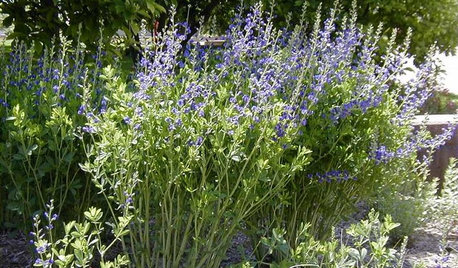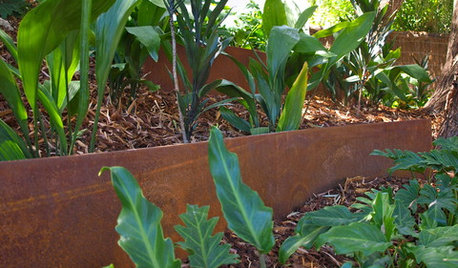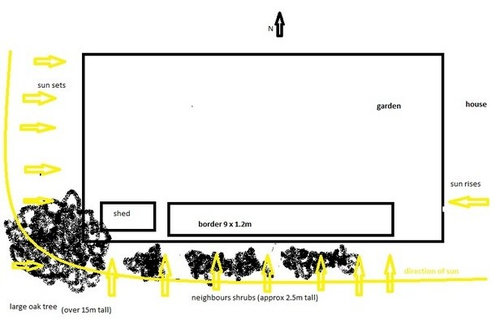planting fruit in border - advice needed
seneca196
10 years ago
Related Stories

GARDENING GUIDESGreat Design Plant: Grow Blueberries for Their Fruit and More
Eastern gardeners should consider growing blueberry plants for their delicious fruits, bee-friendly spring blooms and brilliant fall foliage
Full Story
GARDENING GUIDES5 Great Plants for Borders and Screens
Get the effects of a shrub but in less time — and drawing more winged pollinators — with these herbaceous perennials
Full Story
CONTAINER GARDENSSolve Your Garden Border Dilemmas With Planted Pots
Set your containers free from the patio — placed among plantings in the ground, they fill unsightly gaps, let you experiment and more
Full Story
EDIBLE GARDENSHow to Grow 10 Favorite Fruit Trees at Home
Plant a mini orchard in fall, winter or early spring to enjoy fresh-off-the-tree fruit the following year
Full Story
DECORATING GUIDES10 Design Tips Learned From the Worst Advice Ever
If these Houzzers’ tales don’t bolster the courage of your design convictions, nothing will
Full Story
FARM YOUR YARDIf You Have Room for Only One Fruit Tree ...
Juice up a small garden with one of these easier-care or worth-the-effort fruit trees for a mild climate
Full Story
FALL GARDENING5 Fall Fruits You Can Grow in Containers
Brighten your porch or patio with a potted pomegranate, kumquat, blueberry bush or another great fall fruit
Full Story
SPRING GARDENINGTop 10 Scented Plants for Your Garden
A palette of perfumed plants can transform even the smallest of gardens into a sensory delight
Full Story
LANDSCAPE DESIGNGet an Edge: The Best Border Material for Your Garden
Do you want garden edging made of stone, concrete, metal or wood? Here are things to consider when choosing
Full Story









drew51 SE MI Z5b/6a
Bradybb WA-Zone8
Related Professionals
Canton Landscape Architects & Landscape Designers · Carson Landscape Architects & Landscape Designers · West Chester Landscape Architects & Landscape Designers · San Juan Landscape Architects & Landscape Designers · Frisco Landscape Contractors · Milford Landscape Contractors · Brockton Landscape Contractors · Edwardsville Landscape Contractors · Hendersonville Landscape Contractors · Hurricane Landscape Contractors · Lewisville Landscape Contractors · Thornton Landscape Contractors · Weslaco Landscape Contractors · Silver Firs Landscape Contractors · Sun Valley Landscape Contractorscanadianplant
florauk
seneca196Original Author
lawanddisorder